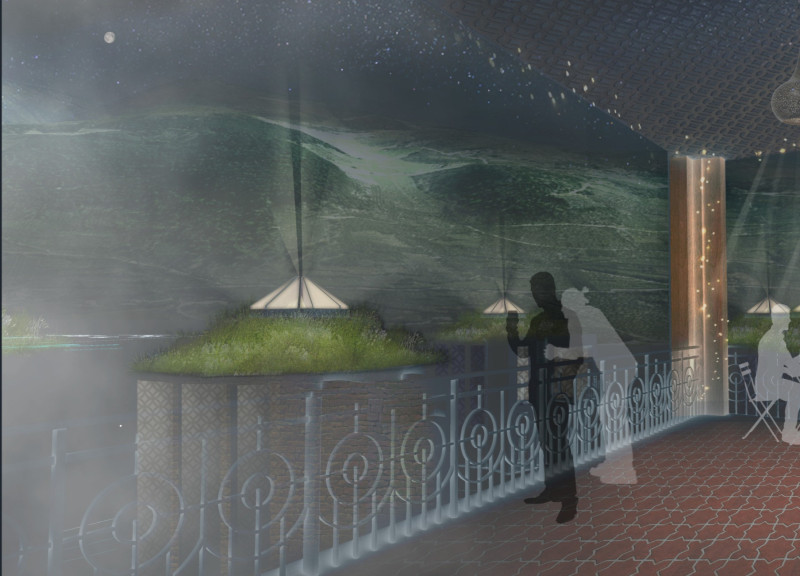5 key facts about this project
The project is situated in the Umbrian Valley, where rolling hills meet vineyards and historical architecture. It serves as a venue for Tili Vini, providing a unique experience that highlights the region's rich culture and traditions. The design concept focuses on creating a sensorial landscape that encourages visitors to connect with the environment and the winery's heritage.
SENSORY EXPERIENCE
Visitors engage with both indoor and outdoor spaces, creating a rich multi-sensory experience. The layout promotes community interaction while allowing for versatile use of spaces. This design approach invites people to enjoy the natural beauty of the Umbrian Valley while fostering social connections among guests.
CONTEXTUAL INTEGRATION
The building's form is shaped to reflect the natural contours of the landscape. By emphasizing the surrounding environment, the design fits harmoniously with the terrain. It incorporates spaces designed for quiet reflection and social gatherings, capturing the essence of local customs and values.
SUSTAINABILITY STRATEGY
Sustainability is a fundamental principle guiding the design. The approach integrates circular design elements that address environmental and economic factors. This not only helps reduce the ecological footprint but also enhances local biodiversity through landscaping that educates and provides a peaceful area for visitors.
MATERIALITY
Material choice is key to fulfilling both aesthetic and functional goals. The use of rammed earth aligns with local building techniques and reduces the environmental impact. Timber boarding serves as cladding, creating a visual link to regional architecture. Reclaimed bricks from previous structures maintain historical significance, while sedum roofs support environmental performance and blend the building with its surroundings.
The design ultimately creates a strong connection among the winery, its visitors, and the surrounding landscape, highlighting how architecture can respond to and enrich local culture and ecology.






















































